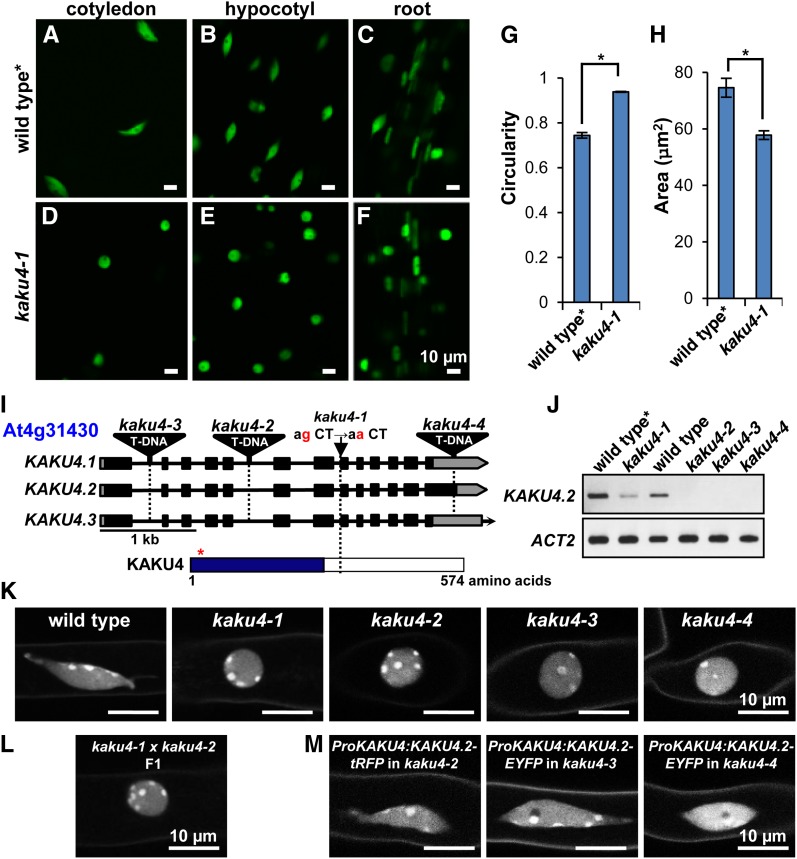Figure 1.
KAKU4 Is Required to Maintain Nuclear Shape in Arabidopsis.
(A) to (F) Nuclei in cotyledon epidermal cells, hypocotyl epidermal cells, and root cells from 1-week-old seedlings were visualized in the wild type and kaku4-1 by expressing Nup50a-GFP. Wild type*, a transgenic plant expressing Nup50a-GFP.
(G) and (H) Nuclear circularity indices (G) and nuclear areas (H) of hypocotyl epidermal cells in 1-week-old seedlings. Thirty independent plants were examined. The circularity indices and nuclear areas of three nuclei in each plant were quantified. Means ± standard errors for n = 30. Asterisks indicate a significant difference from wild type (Student’s t test, *P < 0.05).
(I) Schematic representation of the KAKU4 gene (At4g31430) and the predicted protein KAKU4. The positions of the kaku4-1 mutation and of each T-DNA insertion in three kaku4 mutant alleles are shown. This gene has three splicing variants, KAKU4.1, KAKU4.2, and KAKU4.3. Closed boxes, exons; solid lines, introns; gray boxes, putative untranslated regions; red asterisk, the position of putative nuclear localization signal; blue box, the region conserved among seed-bearing plants. See Supplemental Figures 2 and 3 for details.
(J) RT-PCR of KAKU4 transcript in kaku4 mutant alleles. Actin2 (ACT2) was used as a loading control.
(K) to (M) Nuclei stained with Hoechst 33342 in root hair cells for kaku4 mutant alleles (K), for an allelism test between kaku4-1 and kaku4-2 (L), and for complementation tests of the kaku4 phenotype by expressing KAKU4-tRFP or KAKU4-EYFP under the control of the endogenous promoter in three kaku4 mutant alleles (M). See Supplemental Figure 4 for wide fields of view.

